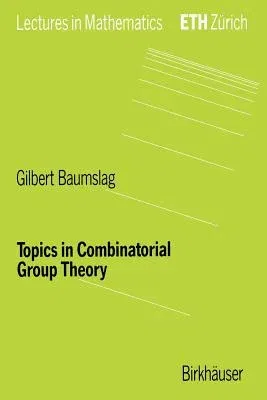Gilbert Baumslag
(Author)Topics in Combinatorial Group Theory (1993)Paperback - 1993, 1 September 1993

Qty
1
Turbo
Ships in 2 - 3 days
In Stock
Free Delivery
Cash on Delivery
15 Days
Free Returns
Secure Checkout
Part of Series
Lectures in Mathematics. Eth Zürich
Part of Series
Lectures in Mathematics. Eth Z Rich (Closed)
Part of Series
Lectures in Mathematics. Eth Zurich
Part of Series
Lectures in Mathematics. Eth Za1/4rich
Part of Series
Lectures in Mathematics. Eth Z?rich
Part of Series
Lectures in Mathematics. Eth Zrich
Part of Series
Lectures in Mathematics. Eth Z Rich
Part of Series
Lectures in Mathematics Eth Zurich
Part of Series
Lectures in Mathematics. Eth Zurich (Closed)
Part of Series
Lectures in Mathematics. Eth Z??rich
Print Length
170 pages
Language
English
Publisher
Birkhauser
Date Published
1 Sep 1993
ISBN-10
3764329211
ISBN-13
9783764329211
Description
Product Details
Author:
Book Edition:
1993
Book Format:
Paperback
Country of Origin:
US
Date Published:
1 September 1993
Dimensions:
23.39 x
15.6 x
0.97 cm
ISBN-10:
3764329211
ISBN-13:
9783764329211
Language:
English
Location:
Basel
Pages:
170
Publisher:
Series:
Lectures in Mathematics. Eth ZürichLectures in Mathematics. Eth Z Rich (Closed)Lectures in Mathematics. Eth ZurichLectures in Mathematics. Eth Za1/4richLectures in Mathematics. Eth Z?richLectures in Mathematics. Eth ZrichLectures in Mathematics. Eth Z RichLectures in Mathematics Eth ZurichLectures in Mathematics. Eth Zurich (Closed)Lectures in Mathematics. Eth Z??rich
Weight:
258.55 gm

